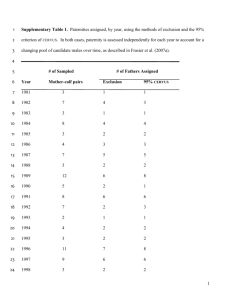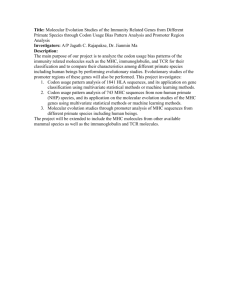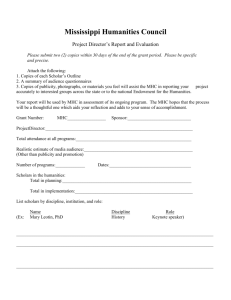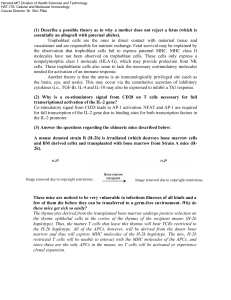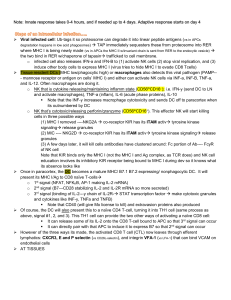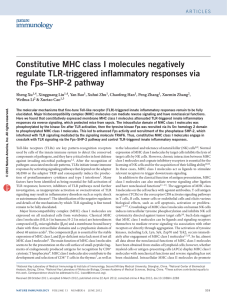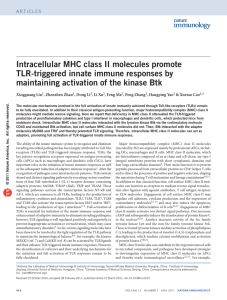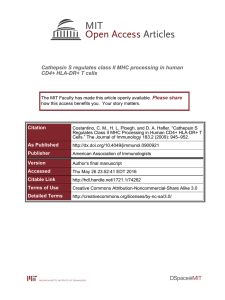T Cell Development
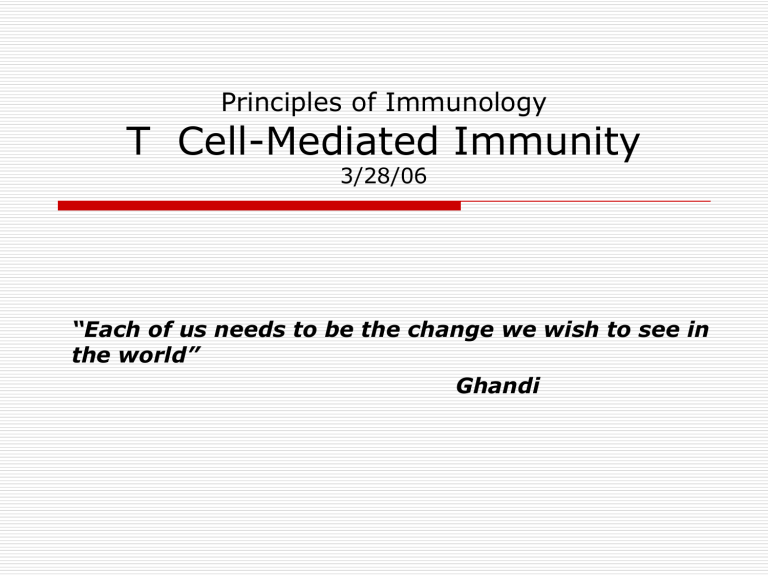
Principles of Immunology
T Cell-Mediated Immunity
3/28/06
“Each of us needs to be the change we wish to see in the world”
Ghandi
Word/Terms List
ADCC
Effector cells
GVH reaction
Perforin
T Cell-mediated Immunity
Principal function-Response to intracellular pathogens and cells expressing foreign antigens
Recirculation-Naïve T cells circulate between the blood stream and the lymphatic system
Antigen presentation-Naïve T cell cells only respond to APCs
Priming of T Cells
Three types of effector T cells
CD8 (T
C
)
CD4 (T
H1
)
CD4 (T
H2
)
Each type
Responds to different types of Ags
Activated by different Ag presentation
Has different effector function
T Cell Effector Types
CD8
Viruses and intracellular bacteria
MHC I
Cytotoxic effector cells
CD4 T
H1
Bacteria and parasites in APCs
MHC II
Effectors activate macrophages, CTLs and induce B cells to produce opsonins
CD4 T
H2
Extracellular bacteria and toxin producers
MHC II
Activate B cells to produce multiple antibody classes
T Cell Adhesion
T cells pass through endothelial cells
(extravasation)
Endothelial cells and T cells both have cell adhesion molecules (CAMs)
Various CAMs
Cell Adhesion Molecules
Selectins
Mucins
Integrins
Immunoglobulin superfamily
Dendritic cells
Macrophages
B cells
APCs
Dendritic Cells
Antigen presentation is sole function
Antigenic uptake is followed by migration to lymph nodes
Expression of MHC I, MHC II and B7
Loses phagocytic property
Secretes chemokines
Macrophages
Involved in both innate and adaptive immunity
May destroy pathogens or present Ag to T cells
Expression of MHC I, MHC II and B7
Scavenges dead cells
B Cells
Binds soluble antigens
Constitutively expresses MHC II
Induced to express B7
NK Cells
~5% of lymphocytes
Nonspecific cytotoxicity
No TCR/CD3
Not MHC restricted
No memory
CTL Cytotoxicity
Conjugate formation
Membrane attack
Dissociation
Target cell death
Conjugate Formation
Cell adhesion
Recognition of MHC I:Ag on target cell
Membrane Attack
Granules in CTLs
Perforin
Granzymes
Exocytosis of granule contents
Perforin action similar to C9
Granzymes act as nucleases
Fas ligand to Fas triggers target cell death
Dissociation and Target Cell Death
CTL interacts for about five minutes
Dissociates and can conjugate with other target cells
Target dies after several hours
Antibody-Dependent Cell-Mediated
Cytotoxicity
NK cells, macrophages, neutrophils
Bind to Fc region of Ab
Multiple cytotoxic mechanisms
Graft vs. Host Reaction
Immunocompromised recipient
Lymphocytes of donor attack allogeneic antigens of recipient
Splenomegaly



